The S. G. Kütner Engraving of 1774 Page at The Face Of Bach
The Face Of Bach
This remarkable photograph is not a computer generated composite; the original of the Weydenhammer Portrait Fragment, all that
remains of the portrait of Johann Sebastian Bach that belonged to his pupil Johann Christian Kittel, is resting gently on the surface
of the original of the 1748 Elias Gottlob Haussmann Portrait of Johann Sebastian Bach.
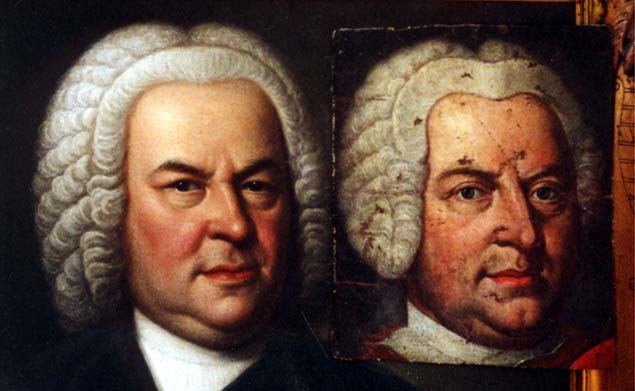
1748 Elias Gottlob Haussmann Portrait, Courtesy of William H. Scheide, Princeton, New Jersey
Weydenhammer Portrait Fragment, ca. 1733, Artist Unknown, Courtesy of the Weydenhammer Descendants
Photograph by Teri Noel Towe
©Teri Noel Towe, 2001, All Rights Reserved
The S. G. Kütner Engraving of 1774
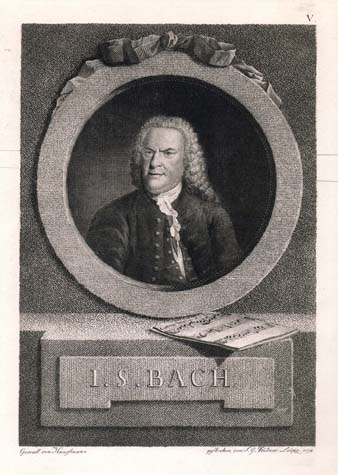
Incredible as it seems, the first portrait print of Johann Sebastian Bach was not published until 1774. No such "popular" image is
known to have been made in his lifetime, and no one is certain at this late date why the Kütner print was commissioned and
published nearly 25 years after his death. Certainly, no description of it is more cogent or more succinct than that of Prof.
Neumann:
"Oldest graphic representation of Bach, inscribed: "Gemalt von Haußmann/gestochen von S. G. Kütner, Leipz. 1774".
This painter and etcher (1747-1828) was a drawing master in Mitau [now Jarselva in Latvia] from 1775 on, was a pupil
of Johann Friedrich Bause (1738-1814) at the Leipzig Art Academy and a fellow student and friend of Johann
Sebastian Bach the Younger (1748-1778), the son of C. P. E. Bach [cross reference omitted]. This drawing [sic] was
obviously intended as a memento and probably made at the instigation of the last-named, who sent it to J. N. Forkel on
20 April 1774 with a letter recommending it as a "recent etching, finely done, and rather accurate, of my dear late
father's portrait." It is highly probable that he provided his own Haussmann picture as the model [citations omitted],
particularly if one assumes that this was the Haussmann replica of 1748 [cross reference omitted], the only portrait of
the Haussmann group with the waistcoat similarly depicted. In other respects, this impressive mirror image of the
original, more severe and grave, with the canon-sheet now outside the portrait and unsigned, and the costume more
modern, was probably engraved by Kütner under Bause's influence...." (Neumann, BDL, p. 405)
It is indeed unfortunate that Kütner did not enter the date of the Haussmann model on which he based his engraving, but the
circumstantial evidence points in no direction other than the 1748 version.
That Kütner's engraving ultimately was derived from the 1748 Haussmann, however, becomes even more apparent when one
appropriately crops and "flops" the engraving and then compares it with the two Haussmann versions; in fact, that it is so clearly
based on the 1748 Haussmann is almost dispositive evidence that the 1748 Haussmann portrait presently in the collection of William
H. Scheide in Princeton, New Jersey, USA, is the Haussmann portrait of Johann Sebastian Bach that Burney saw when he visited
Carl Philipp Emanuel Bach in Hamburg in 1772.
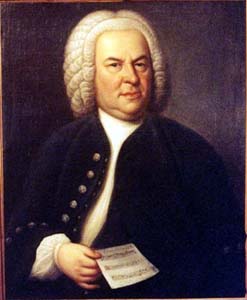
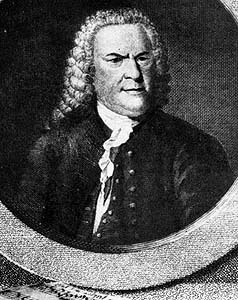
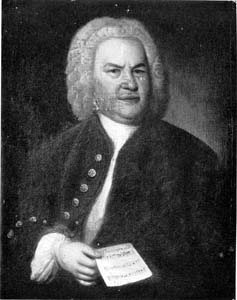
1748 version; 1774 Kütner Engraving; 1746 version
C. P. E.'s candid assessment of the portrait print in his letter to Forkel describes it fittingly, and it is clear that C. P. E. found the
portrayal sufficiently accurate to give it at least his satisfied "nihil obstat", if not his enthusiastic "imprimatur". It is worth noting,
however, the careful wording. C.P. E. does not write that it is a fair likeness of his father, per se: he writes that the engraving is a
"fair likeness of [his] dear late father's likeness."
That Forkel used the Kütner print as the basis for the frontispiece to his landmark, pioneering monograph on Bach when it finally
was published, in 1802, nearly 30 years after he had received his exemplar of the Kütner engraving from C. P. E., is indicative of his
faith in the representation that C. P. E. had made about its accuracy.
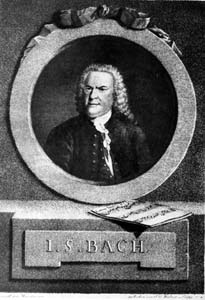
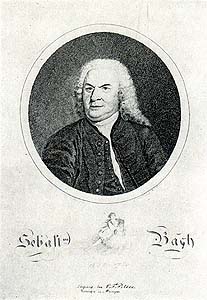
S. G. Kütner, 1774; F. W. Nettling, 1802
Since Forkel is known to have spent six months working and studying in Leipzig in 1801, he surely must have had the opportunity
to see the 1746 Haussmann, which was then in the possession of August Eberhard Müller, the newly appointed Cantor, resident in
the Thomasschule, and I am confident that he did so. I am also confident that F. W. Nettling, the prominent local graphic artist who
engraved the frontispiece for the Forkel biography saw it, too, because Bach's clothing has been reworked to agree with the
underlying Haussmann model. Because the 1748 version was not in Leipzig in 1801 and the 1746 version was, the 1746 version has
to have been the guide for the revised version of the Kütner print that became the frontispiece of the Forkel biography.
Another interesting question concerns Kütner's own access to the 1748 Haussmann portrait, which, by the 1773-1774 academic
year, was in Hamburg with C. P. E., who had succeeeded his godfather Georg Philipp Telemann as that city's Director musices in
1768. That he was a friend and student colleague of the younger Johann Sebastian is documented, but when and where did Kütner
see the 1748 version of the Haussmann, on which the engraving is clearly based, in order to copy it, if he actually saw the original at
all?
One plausible scenario: Kütner took a vacation trip to Hamburg with his school chum, and the project was conceived, undertaken,
and completed then and there. But, while that is possible, it somehow seems unlikely that Kütner actually engraved the image
directly to the plate in C. P. E.'s home, with the 1748 Haussmann portrait in front of him. It would have been easier for him to make
a good reference drawing from which to work at his leisure upon his return to Leipzig.
There is another possible scenario, however, that should not be overlooked. Johann Sebastian the Younger was himself an artist
after all, and a good one. Is it not possible that it was he who made the now apparently lost "Stichvorlag" drawing of the 1748
Haussmann portrait of his grandfather, from which Kütner then engraved his portrait print?
Please click on 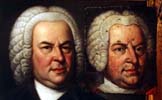 to return to the Index Page at The Face Of Bach.
to return to the Index Page at The Face Of Bach.
Please click on  to visit the Johann Sebastian Bach Index Page at Teri Noel Towe's Homepages.
to visit the Johann Sebastian Bach Index Page at Teri Noel Towe's Homepages.
Please click on the 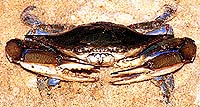 to visit the Teri Noel Towe Welcome Page.
to visit the Teri Noel Towe Welcome Page.
TheFaceOfBach@aol.com
Copyright, Teri Noel Towe, 2000 , 2002
Unless otherwise credited, all images of the Weydenhammer Portrait: Copyright, The Weydenhammer Descendants, 2000
All Rights Reserved
The Face Of Bach is a PPP Free Early Music website.

The Face Of Bach has received the HIP Woolly Mammoth Stamp of Approval from The HIP-ocrisy Home Page.